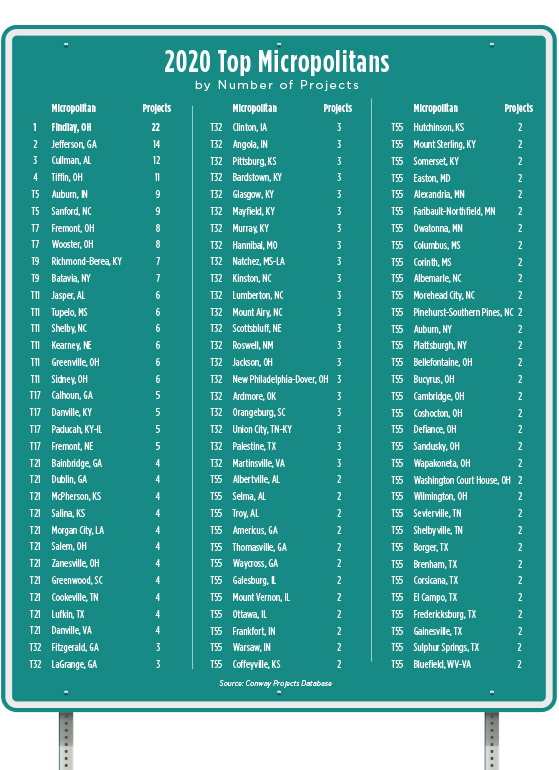Micropolitan areas were socially distanced before it became a thing.
Defined as having a population between 10,000 and 49,999, they sometimes can be virtually synonymous with entire counties, their populations spread across rolling hills and valleys.
Others benefit from proximity to larger metro areas: not too far away, but just far enough to avoid being annexed — for now. Just ask perennial former No. 1 micro Statesville-Mooresville, North Carolina, which was swallowed up by the greater Charlotte CBSA several years ago, yet still churns results for its newly defined region.
Among the salient characteristics of these communities is proximity to major transportation infrastructure such as Interstate interchanges and rail hubs. Another is their tendency to be “halfway points” between bigger communities, so companies see them as good logistical locations for investments.
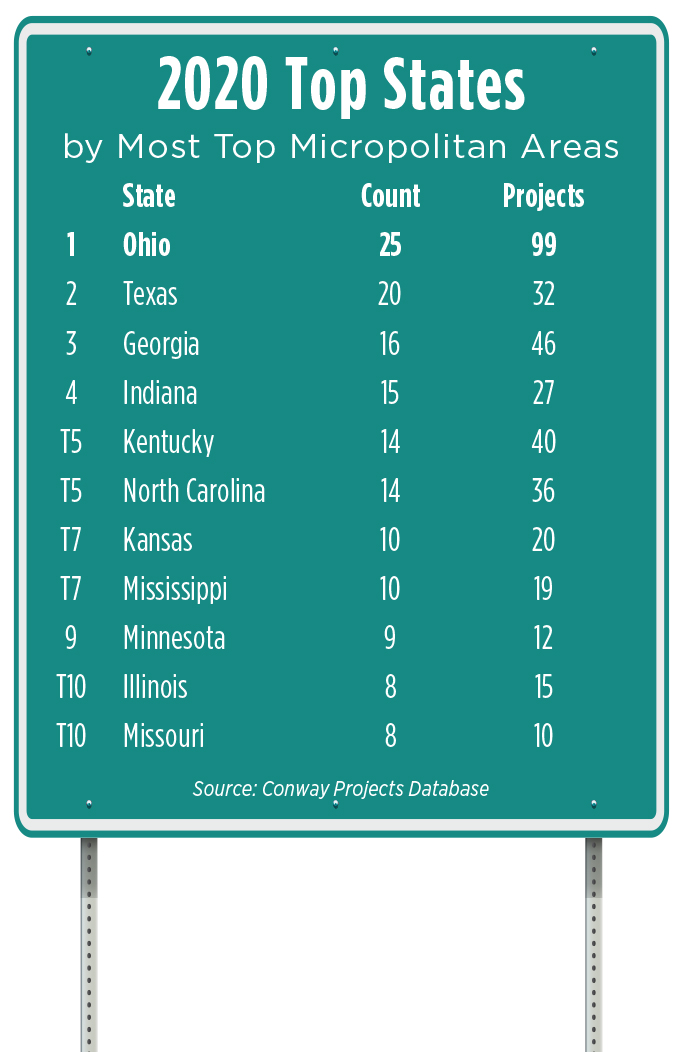
In the COVID-19 era, it must also be said that companies and work-from-home talent have dispersed to smaller communities nationwide because of the pandemic and managed for the most part to maintain, if not improve, their productivity. A certain level of broadband connectivity and amenities may convince many of them to stay that way in the future.
Whatever their profiles may be, small towns can pack a big punch. Site Selection’s Top 10 Micropolitan Areas by corporate projects landed in 2020 either out-perform or tie the project numbers we’ve tallied for this year’s Tier-3 Top Metros — a class of metro area defined as under 200,000 in population. And this year’s multiple-time champion Findlay, Ohio, has a total of 22 projects that not only tops Tier-3 champion Sioux City’s 20, but would tie for seventh place among the Tier-2 metros (classified as those with between 200,000 and 1 million citizens).
Another ranking based on an entirely different set of criteria — including long-term personal income changes as well as negative points awarded for welfare and Medicaid — is economist William Fruth’s POLICOM rankings of economic strength, the most recent edition of which was just issued in February 2021. He defines economic strength as the long-term tendency for an area to consistently grow in both size and quality.
Most of Site Selection’s Top Micros don’t even make Fruth’s top 50 (out of 543 total in the U.S.). The only ones that do are in Ohio — Wooster and Sidney rank in ties for seventh and 11th, respectively, in our project scorecard, and rank No. 14 and No. 24 in Fruth’s rankings. They’re among six Ohio towns found in our top 20 this year, and 25 of our Top 100. A fair number of Ohio cities fare well in our Top Metros rankings of larger cities too. Fruth’s top micropolitans for economic strength are led by No. 1 Bozeman, Montana (for the fourth straight year), Heber, Utah; Vineyard Haven, Massachusetts; Breckinridge, Colorado; and Jackson, Wyoming-Idaho. Site Selection’s top-rated Jackson is in … you guessed it … Ohio, tied for 32nd with three projects.
Our full chart of the top 100 micropolitan areas appears in the following pages, with our two Governor’s Cup winners Ohio and Texas topping the charts with the most Top Micros per state. Here’s a look at selected communities among our top 20:
No. 1 Findlay, Ohio
The Findlay story is familiar to Site Selection readers from its many years in a row at the No. 1 spot. This year’s project total, however, was generated in part by companies’ responses to the unfamiliar territory of the pandemic.
“A number of our companies shut down for a day or two to change lines and install safety measures, but otherwise operated during the pandemic,” says Findlay Mayor Christina Muryn. “It shows how resilient we are.”
Seeing the investment in northwest Ohio, she says, reinforces how well the area has created an environment where businesses can thrive, and how strong the area’s work ethic remains. A Findlay native and University of Findlay graduate, she says her alma mater is a strong community partner that’s at the table for every conversation. The school recently formalized a relationship with Blanchard Valley Health System to encourage more students from northwest Ohio to consider healthcare majors by providing increased opportunities for students to have clinical experiences at the region’s numerous BVHS facilities. The plan includes fully utilizing the simulation laboratory located on the main campus of Blanchard Valley Hospital.
Tim Mayle, director of economic development for Findlay-Hancock Economic Development, points out that Owens Community College and Bowling Green State University are also major workforce partners, and the three university presidents are working with Mayle’s team to create a center for advanced manufacturing and logistics — two sectors that find the Findlay area a sweet spot.
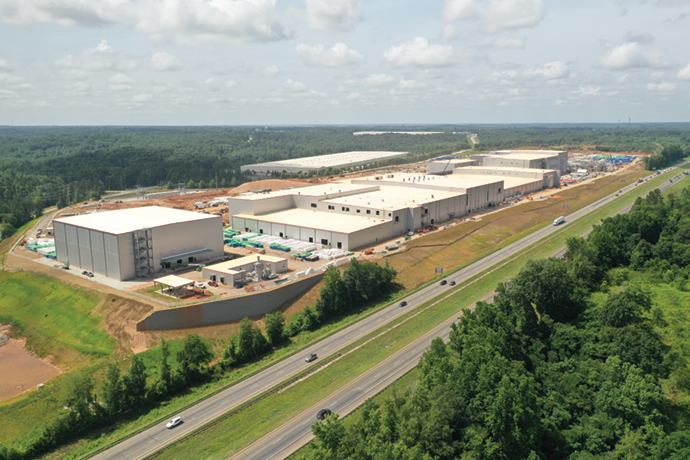
Muryn points out that the regional sweet spot extends to Findlay’s sister communities throughout northwest Ohio, including places such as Tiffin and Fremont that also show up on our Top Micros list. It’s about taking a multi-pronged approach, she says.
“There is no one direct path to economic development and success in growing the economy,” she says. “It takes all facets — attracting and retaining the workforce; housing availability and amenities; having white-collar corporate headquarters along with our manufacturing and distribution base.” That sort of diversification is important, she says. “It’s one of the strengths of our community, and it’s reflected in some of the other northwest Ohio communities.”
Company pivots in Findlay were numerous: Valfilm created a packaging material that kills COVID-19 on contact. Bologna, Italy–based GVS Filtration within a five-week span modified their line and started supplying PPE for the national stockpile for various mask filters.
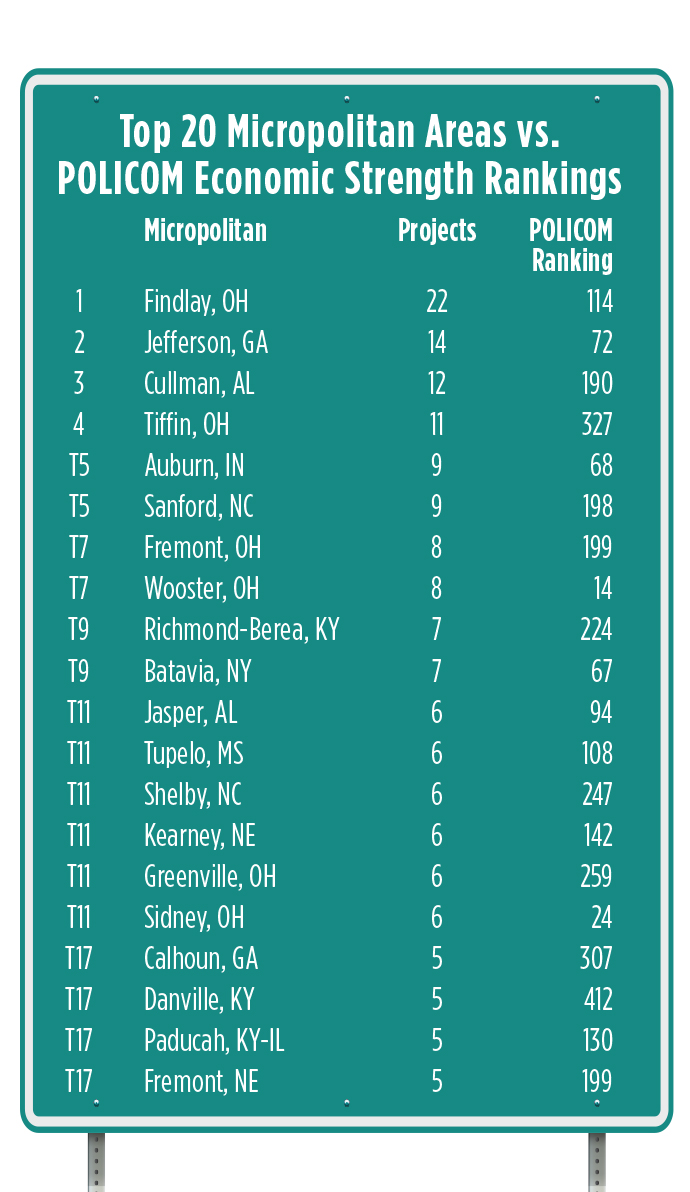
Asked to describe the experience, Chris Schoonover, process development director for GVS Filtration, says, “The decision to transition to PPE manufacturing was made rapidly by the GVS Leadership Team at the onset of COVID-19 in Italy and driven by the global need to provide filtering face mask products to protect people. As the automotive sector was slowing down, we were able to leverage and transition GVS filter manufacturing technology, material acquisition capabilities and a highly skilled workforce focused on producing automotive filtration products to the manufacture of N99 disposable masks and our Elipse brand of reusable filter cartridge respirators. Early in the transition, Findlay Hancock County Economic Development supported us by providing contacts in the Ohio Supplier Network for materials and components.”
GVS Group has 2,800 employees worldwide, with 13 plants in Italy, the UK, Brazil, the U.S., China, Mexico and Romania. A total of 267 of its 546 U.S. employees are in Findlay. Asked to compare the area to others, Schoonover says, “the Findlay, Ohio, location is one of the major centers of engineering talent and innovation for GVS. GVS made the necessary adjustments to double our workforce in order to accomplish this transition with the support of local staffing providers.”
Tim Mayle says the company, originally a spinoff of Cummins Engine, has now basically doubled in size as it moves into the medical sector, and “this is not just a one-time reaction to COVID,” he says. “They’ll be making masks long into the future.”
Marathon, headquartered in Findlay and a routine investor in growth, instead saw about 300 people laid off in a year that combined a pandemic with its spinoff of Speedway. “We wanted to keep as many of these people as we could here in town,” Mayle says. So his team created a web portal where 100 individuals signed up and many were able to connect with about 35 companies. “Quite a few have been reemployed in the community,” he says.
A similar situation happened with auto parts manufacturer Mitec Powertrain, which had to close its doors before the pandemic just one year after an expansion even though it had continued to see steady business growth as its parent company in Germany went through bankruptcy. In came Werk-Brau to save the day. “They purchased the building, and already rebranded it,” Mayle says, in part because the Findlay-Hancock team knew the building was coming available due to Mitec’s wind-down. “They make excavating buckets. Most say W-B on the side, and they’re all made in Findlay, Ohio. They bought the building before Mitec left, leased it back to them, then backfilled it. That was a unique experience. It was brand new, then it closed, but it never sat empty for one day. We were able to connect the dots, and sealed the deal before Mitec left the community.
The community also helps the unemployed with its FindlayMeansJobs.com website. The area peaked at around, 6,200 unemployed in the pandemic’s early days. Today that total is between 600 and 700. “It’s relationships,” Mayle says. “Companies trust us and allow us to work as basically part of their human resources department.”
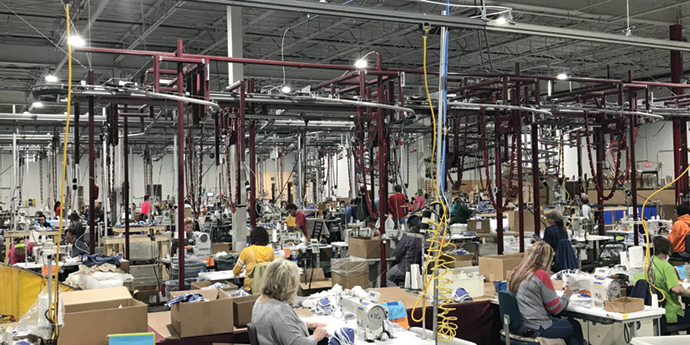
Another of those companies is Ball Corp., which invested $34 million in a 2020 project at its beverage packaging plant in Findlay. “Ball is experiencing unprecedented demand for our aluminum packaging, and that demand was accelerated by the impact of COVID-19,” says Tom McKay, plant manager, Beverage Packaging, North & Central America. That means new plants popping up in Glendale, Arizona; Pittston, Pennsylvania; and Bowling Green, Kentucky, and new lines in Fort Worth, Texas, and Rome, Georgia, as well as Findlay. “Findlay is centrally located, has a terrific workforce and supports business growth. Our Findlay plant team understands the complexity of our business and we are excited to invest again in our Findlay team and plant.”
The company now has been in Findlay for decades, and knows what it likes.
“We know that communities can vary in how they welcome business growth, and you want to invest in locations that meet your customers’ needs and that recognize the value of the investment,” McKay says. “Findlay does both. Our company has deep Midwestern roots, and we often talk about the ‘Midwestern work ethic.’ We certainly have experienced that in Findlay, and combined with the needs of our customers, access to transportation infrastructure and a sizeable population with skills needed to work in our plants, Findlay and northwest Ohio is a good location for us to grow.”
No. 2 Jefferson, Georgia
It says something about the value of Jackson County, Georgia — home to No. 2 Top Micro Jefferson — that two of Amazon’s seven Georgia fulfillment centers are located there. But they’re just the prow of the ship in a region along I-85 just northeast of Atlanta that is fast growing into a fulfilling destination all its own.
Projects tracked in 2020 are led by SK Innovation’s mammoth battery plant under construction near Commerce, where an expansion was announced before the first phase was even done. Notwithstanding a legal challenge from LG Chem that resulted in an unfavorable ruling for SK by the International Trade Commission that could put the South Korean company’s growth plans for North America on hold, the project continues to rise directly next to the highway on a plot so large it seems to follow the curve of the planet.
In September, SK Innovation announced it planned to hire more than 1,000 skilled American workers by the end of 2021 as it prepared for initial production at the first of two EV battery plants in Commerce, with the support of the State of Georgia, Jackson County and City of Commerce. SK Battery America’s EV battery plants will directly create more than 2,600 permanent jobs in the Jackson County area by 2024. To help begin the process of hiring and training workers, SK Battery America signed a partnership agreement with Georgia Quick Start and Lanier Technical College in Georgia. SK Innovation also has donated $60,000 to the Empower College and Career Center (EmpowerC3), a charter high school in Jackson County scheduled to begin operations in 2021.
Other projects in the area include investments by Toyota Industries Compressor Parts America in Pendergrass, and several retail distribution centers.
No. 3 Cullman, Alabama
One of Alabama’s success stories in 2020 comes from a Cullman-based company, HomTex, which is creating more than 300 new jobs at a new plant making PPE in Selma. “This second operation will make HomTex Inc one of the largest face masks manufacturers in the USA, and we are proud to be manufacturing these products in Cullman and Selma,” said Jeremy Wooten, president and CFO of HomTex.
Founded in 1987 by Jerry Wooten, the company manufactures bed linens and other items, with locations in Cullman and Vinemont, as well as production and distribution facilities in North Carolina, South Carolina and Tennessee, and offices in China and India. Before the Selma project was pursued, the company in April 2020 invested $5 million in an expansion in Cullman to begin producing the pleated, 3-ply surgical masks used in hospitals, nursing homes and other facilities. The project was assisted by the Alabama Department of Commerce and the Cullman County Economic Development Agency.
“The coronavirus pandemic has clearly demonstrated that our country needs a dependable domestic production pipeline for PPE, and Cullman-based HomTex has stepped up to fill a portion of that critical need,” said Greg Canfield, secretary of the Alabama Department of Commerce. “With its expansion in Cullman and its new growth plans in Selma, HomTex is helping to make Alabama a U.S. hub for the production of PPE.”
Another Cullman manufacturer getting in on the PPE action is JELCO, whose usual line produces fall-protection gear for utility workers. A release from the Alabama Department of Commerce’s “Made in Alabama” website quoted Philip Clemmons, president and CEO of JELCO, on the shift: “Back in March,” he said, “we looked around and said, ‘What can we do to help with COVID-19?’ We knew how to sew, and I had capable people. I could also buy more sewing machines and hire more people. I talked to a few of my friends who are doctors, and that’s how we got into PPE.” An initial move to washable face masks grew into hospital gowns after Cullman Regional Medical Center placed an order for 3,000. “There are still a lot of companies that are importing their PPE from China and India,” Clemmons said, “but what we have is something that is made right here in Alabama, here in America. I think a lot of people would rather have something made here than made in China.”
No. 4 Tiffin, Ohio
Building on 2020 project investments from the likes of TH Plastics and American Plastics (who are also investors in Findlay), as well as projects from Mennel Milling Co. and Dorel Home Furnishings, the Tiffin-Seneca Economic Partnership (TSEP) announced in January that it is launching a new Seneca Fortune 500 initiative, with the intention of doubling its business outreach to connect with an unprecedented 500 businesses or more in Tiffin and rural Seneca County in 2021. The area is home to around 1,400 business establishments.
“We know that existing businesses drive the local economy,” said Tiffin Mayor Aaron Montz. “Although we are an economic development leader in our region and in the country, I’m thrilled to see we plan on taking our outreach to new heights.”

Tiffin-Seneca Economic Partnership
It’s certainly worked for Tiffin’s downtown, where TSEP says more than 50 net new businesses have located since he organization started working with Heritage Ohio on a Main Street program seven years ago. Those companies and their employees are helped by the December 2020 debut of Community Connect, a Bascom Communications wifi service that offers anyone downtown wireless access to the internet free of charge.
The cooperative approach to such an amenity goes back 115 years to 1906, when Bascom was formed by a group of farmers who wanted telephone voice services brought to Tiffin and nearby Fostoria. That type of collaboration is key to the area’s economic development game too.
The TH Plastics project, announced in November, is landing in a spec building constructed at Eagle Rock Business Park in 2018 by Clouse Construction. It’s the latest in a series of successful spec building projects back by economic development leaders, including a building constructed by TSEP’s predecessor in 2006 that now houses MBDS, and a building constructed in 1994 that today is home to Quick Tab II.
TH will add another 112,000 sq. ft. to the new facility’s footprint. TSEP, the Regional Growth Partnership (based in Toledo, which finished tied for No. 1 in Tier-2 Metros in this issue) and JobsOhio worked with TH Plastics to secure the project, which will receive Roadwork Development assistance from Development Services Agency and Ohio Department of Transportation Jobs & Commerce funds. Local incentives include the City of Tiffin’s New Jobs Program, property tax exemption through a pre-existing Community Reinvestment Area and the offer of up to $330,000 in potential workforce development grants through OhioMeansJobs-Seneca County.
American Plastics’ Tiffin facility, the sole manufacturer of shelving for the Craftsman brand, in August announced it had invested $7 million into its operations at the plant and was raising starting wages to $14.50 an hour. American Plastics employs 142 people in Seneca County.
Collaboration was also evident in the November announcement by OhioMeansJobs Seneca County officials of a new partnership with Custom Glass Solutions (CGS), in Upper Sandusky and Fostoria, that is to lead to an apprenticeship program as the company aims to have every occupation at its operation become a state registered apprenticeship in the next three years. CGS has been operating since 1974 in Upper Sandusky and expanded operations in Fostoria in 2019. The company employs about 350 people in Upper Sandusky and 120 in Fostoria. Since 2019, the company has already expanded its Fostoria plant by 27,000 square feet.
“Our 500-plus employees are our greatest asset and the engine that drives our business,” said Deana Piekos, director of human resources at CGS. “Our partnership with OhioMeansJobs provides resources and an infrastructure to help us continue developing a world-class workforce. By raising the level of capability of our people, we give ourselves a competitive advantage as we pursue aggressive growth initiatives.”
Early this year, a local legend benefited from the collaborative spirit too. Ballreich Snack Food Co., which started in 1920 and came up with the term “marcelled” for the name of the waves in its chips based on the popular hairstyle of the time, will purchase new machinery with assistance from a $25,000 JobsOhio Inclusion Grant that will allow it to continue to expand its 75-employee facility. Ballreich’s worked with TSEP and RGP in Toledo to secure the grant.
No. 5 (tie) Auburn, Indiana, and Sanford, North Carolina
Located not far from national RV capital Elkhart, Indiana, Auburn and DeKalb County are seeing investments that include projects from Paragon Steel and Steel Dynamics in Butler; Germany’s Continental AG and CX Institutional in Auburn; and, in Ashley, the first of several massive plastics recycling plants from California-based Brightmark, which broke ground on the plant in 2019. The company last July issued “the largest ever solicitation for plastic waste” at 2.4 billion pounds. The company uses a pyrolysis process to convert plastics into fuels and chemical feedstocks that are sold to customers such as BP.
“Brightmark is on a mission to reimagine waste and wants your difficult-to-recycle plastics — and we want all of them,” said Brightmark CEO Bob Powell. “Plastics 3-7, in particular, are not easily recycled with other technologies, and typically end up in landfills, incinerators or sadly, in our oceans. We’re proud to have a proven, breakthrough, closed-loop solution for transforming these raw materials back into useful products.”
2020 saw a spike in RV sales and use as people saw them as the ideal vehicles for socially distanced travel, recreation and lodging. That means growing RV firms. RV and commercial vehicle maker Forest River in August announced plans to create up to 369 new jobs by the end of 2023 by expanding its manufacturing footprint in DeKalb and LaGrange counties. In DeKalb, the company will invest $3.5 million to expand its 20-acre manufacturing campus in Butler, constructing and equipping a 63,000-sq.-ft. production facility and expanding its existing 30,000-sq.-ft. building. The new facilities will allow Forest River to enhance production of the XLR Toy Hauler — the company’s newest line of toy hauler travel trailers for camping and other uses. Forest River, which employs 9,500 Hoosiers across its 10 Indiana locations, plans to add 120 new jobs in Butler and 249 new jobs in LaGrange.
“We’re excited to continue expanding our operations in Indiana, which provides access to a talented workforce, strong RV manufacturing ecosystem and business-friendly environment,” said Mike Stump, project manager at Forest River. “With the support of the state and local communities in Butler and LaGrange, Forest River will continue to deliver high-quality products to customers around the world, while providing great career opportunities for Hoosiers here at home.”
Founded in 1996, Forest River is a wholly-owned subsidiary of Berkshire Hathaway Inc. and one of the largest RV manufacturers in the U.S. Indiana manufactures nearly 83% of all RVs in the United States and Canada. According to the RV Industry Association, the RV industry contributes more than $32.4 billion annually to Indiana’s economy, with more than 640 businesses supporting 126,140 jobs for Hoosiers.
Sanford, North Carolina, has seen a steady hum of projects in Lee County from companies such as GKN Driveline ($2 million, 15 jobs); Audentes Therapeutics ($109 million, 200 jobs); and Kalyani Group’s Bharat Forge, which is creating 460 jobs and investing nearly $171 million in a project first announced in 2019 that came to fruition in 2020. Kalyani Group is a $3 billion conglomerate, and this is its first U.S. facility, which will serve automotive clients.
“We are delighted to make our biggest overseas investment in North America, in the state of North Carolina, which offers excellent advantages and a strong talent pool,” said Amit Kalyani, Bharat Forge Ltd. deputy managing director, at the 2019 announcement. “Importantly, this also brings us closer to our customers in North America. This investment will help us create a strong global manufacturing footprint as part of our aluminum strategy, spanning Europe, Asia
and the United States.”
Bob Joyce, economic development executive director at the Sanford Area Growth Alliance (SAGA) in October 2020 was named the 2019 North Carolina Economic Developer of the Year by the North Carolina Economic Developers Association (NCEDA). In its citation, the group noted his leadership in attracting a decade’s worth of capital investment and new job creation, by Lee County historical standards, in one year. He responded to nearly 80 project opportunities and helped to land two projects, Project Christmas and Project Forge, which will ultimately add $670 million in investment and create 760 new jobs with an annual payroll of more than $40 million upon project completion. “The incredible success of SAGA’s highly effective public-private partnership model has drawn national attention from other similar communities hoping to replicate SAGA’s economic development formula,” said SAGA CEO Jimmy Randolph.
Like others in small towns across the country, Joyce gave credit to the “team sport” of economic development, including “my office mates, our business leaders and elected officials and government staff, the community college, the business developers at the state level and our marketing partners and allies.”
They were words that nearly every Top Micropolitan area leader could utter in gratitude for a successful run of projects in an unprecedented year of challenges.
